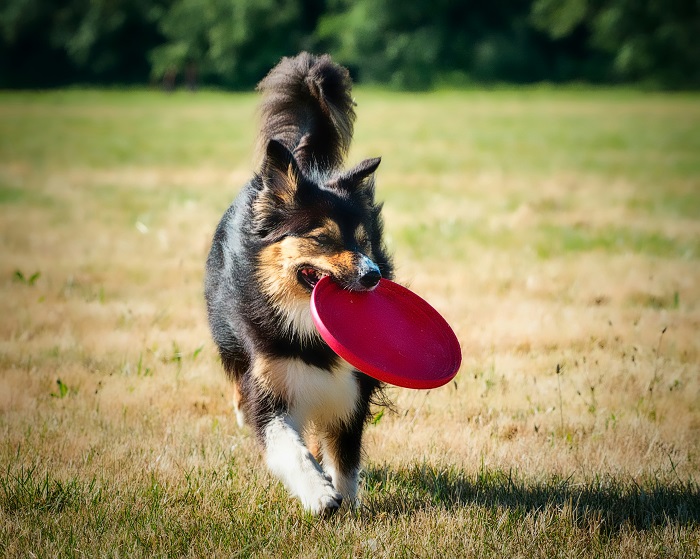The Dog: an active and social mammal like the human

The importance of exercise and social skills for dogs
After working with humans and animals for many years, I want to believe it’s unnecessary to write an article justifying why socialisation and exercise are so important for dogs; it’s a bit like explaining why you have to breath out after breathing in. While it may be optimistic to assume we all believe and agree that our pets have needs beyond food, let’s chat about some of the most important reasons why your pet needs both physical and mental stimulation.
A look back in time
Palaeontologists have suggested that the animal we know today as the dog evolved from a genus called Miacis over 60 million years ago. This genus gave rise not only to dog-like species (wolves, lions, coyotes, jackals etc.) but to other carnivorous species like weasels, civets and genets. These types of animals were highly mobile. In order to hunt and catch prey being fit was a prerequisite for survival. However complex the genetic history may seem, the point of the illustration is that dogs have evolved from social species that rely on natural and regular movement to survive.
My mother was a wolf
Canis lupus familiaris is the Latin name that includes all species of dogs today. Therein lies the name of the ancestor, the Gray wolf (Canis lupus). Depending on which history book you are reading, dogs evolved following the last ice age (11-15 000 years ago) or 130 000 years ago. That’s a huge difference to explain, but ongoing scientific research has found that a number of dog breeds already existed and that multiple dog species were already widespread across the northern hemisphere prior to the last iceage.
Human intervention?
Whatever kind of relationship humans may or may not have formed with those early, terrifying wolves, we all seem to agree that a human-dog bond —advantageous to both species— came about many many years ago. But there’s an interesting question too: did the human take advantage of the dog or vice versa?
Safety in numbers
Dogs and humans decided that living together was far safer than living apart and since those early relationships began dogs have bred or been bred for certain characteristics. Today, the World Canine Organization (FCI) recognises 339 breeds of dog that are divided into 10 groups.
From working dogs to sighthounds, companion and toy breeds to retrievers and terriers—it seems that dogs are bred to please humans.
Back scratching
So if we understand that humans have played an enormous role in selectively breeding dogs to suit our own needs, we should also take a step back and remember that despite being so damned good at pleasing humans, dogs (just like us) are unique mammals who have complex social characteristics as well as their own physiological needs. Many of us seem to ignore this because we have long believed that dogs live only to serve us.
Exercise for physical health
Survival and reproduction are two foundational motivators of all mammals and food plays a significant role in both. A mammal will prioritise food; some dogs are adept at convincing us that they are always hungry! Just like humans, dogs have (amongst other things) a circulatory and a musculo-skeletal system which both need continual stimulation in order to maintain complete physical health.
Sedentary pets often suffer from obesity not only because of a lack of exercise but excessive feeding. Many pet owners haplessly associate food with love which results in overfeeding and all the medical problems associated with the ensuing obesity challenge.
When food intake exceeds a mammal’s normal daily requirements, the unused fatty acid is taken up by fat cells (adipocytes) which increase in size and number. Millions of minute blood vessels are manufactured by the body as a requirement to keep those cells alive. The heart of an obese mammal becomes damaged (atherosclerosis) and ages prematurely when it is required to pump blood into all that extra fat. Also, just like us, dogs suffer from diabetes and many other endocrine diseases that are related to over-eating.
As you can see, regular exercise and correct feeding are therefore both paramount for a healthy pup!
The social animal
Dog society is as complex as that of any other mammal. Canids are a species that have evolved to hunt. African Wild dogs, wolves and dingoes are led and dominated by an alpha breeding pair. Mostly, males are more aggressive than females and the pack bond is strong meaning that individuals protect each other. Co-operative hunting ensures success of the whole pack. Bonding, vocalisation, scent marking and play is common to all these species.
In many cases human circumstance does not allow for domesticated dogs to roam around in hunting packs and so it is rare that we are able to witness their ‘natural’ behaviour. Instead, some circumstances will lead dogs to view their human companions as ‘pack members’. Quite often we can observe this clearly in their seemingly endless need to bond with humans and to please us. Dogs often wag their tails and lie on their backs as an appeasement to their human pack. Their motivation is to appear co-operative towards pack members. And as an evolutionary survival technique, the playfulness of pups strengthens youngsters and teaches them about combat and hunting.
Different types of behaviour can even be seen among different breeds of dogs. Take for example the Jack Russell terrier. Bred in Europe around the early nineteenth century, the dog was used to hunt foxes. It is a highly intelligent and energetic breed with a strong work ethic but is all-too-often acquired by humans because of its size. Many people who live in apartments or limited spaces are perfectly wise to consider having a small dog. But this terrier needs space, exercise and mental stimulation and many a Jack Russell parent can attest to the fact that they may not be able to even afford the amount of real estate that the dog actually needs to be stable and satisfied with life!
Large breed dogs like the Rottweiler are notoriously protective and can sometimes be a handful for a pet owner who does not fully understand their behaviour. A large male Rottweiler often believes that they rank high in the family pack and can sometimes prove to be rather indolent when it comes to being obedient to what they see as lower ranking members.
These examples, while not applying to every Jack Russell or Rottweiler simply illustrate that breed, species, nature and nurture make their own contribution to a dog’s individual character and disposition.
As a vet nurse I often witness the sad reality of many dogs being denied the opportunity to display their normal social behaviour. This in turn can lead to what humans describe as ‘being naughty’. Some dogs are kept alone in households, endlessly waiting for their pack members to return home from work; some chained outside unable to explore or exercise. Dogs that dig up the garden, chew your shoes or become aggressive around food may all be suffering from the lack of natural social skills. Often human intervention includes chemical or manual restraint (chains and cages), mood modifying drugs (anti-depressants) or even mechanical removal of body parts that people find offensive or irritating (debarking).
Again like us, dogs learn their social skills from an early age. An unsocialised adult dog is harder to convince than a playful puppy. Adult dogs that have been allowed to display anti-social behaviour require a very specific and professional approach in order to change. While it may be more difficult to teach an old dog new tricks, perseverance, kindness and the correct training techniques all make it possible. As for humans, regular exercise has been repeatedly proven to lighten one’s mood and increase feelings of well-being.
Within the realms of this article it is not possible to delve into all the complexities of negative behaviour that unsocialised and/or sedentary dogs display. Suffice it to say that even the smallest changes in your dog’s lifestyle with regard to socialisation, food and exercise can make a difference to the most difficult situations. Just as we are fully aware of the advantages of healthy socialisation and exercise for humans, we must remember that these things are just as vital for the mental, emotional and physical health of our dogs.
So go outside and play!
©Liz Roodt 2024
